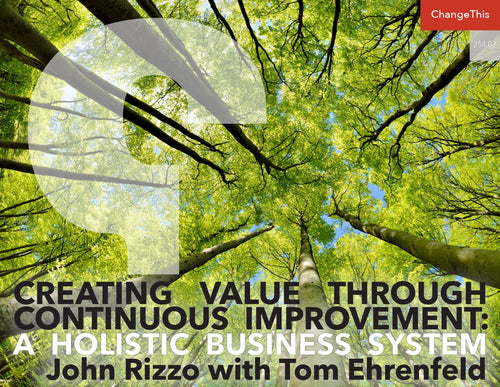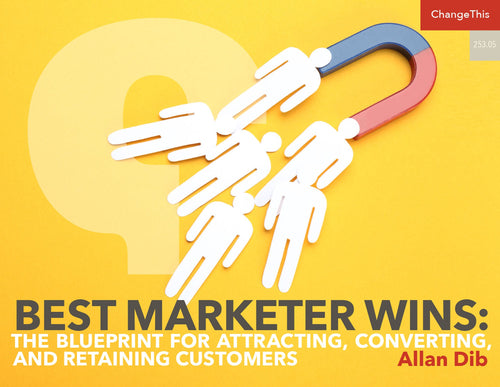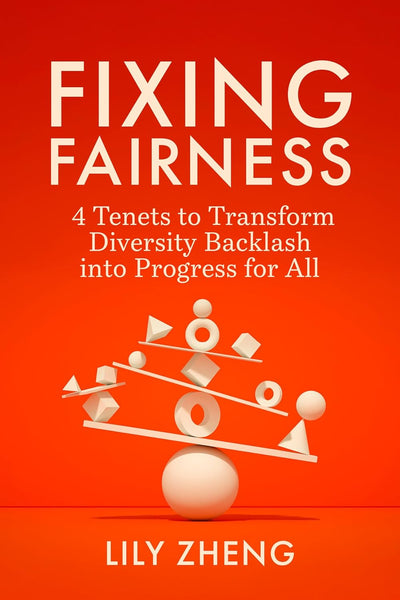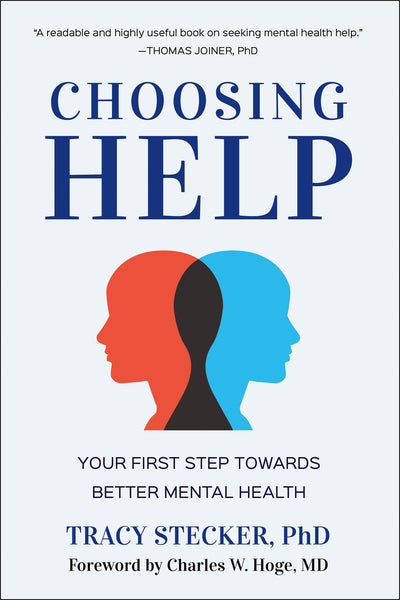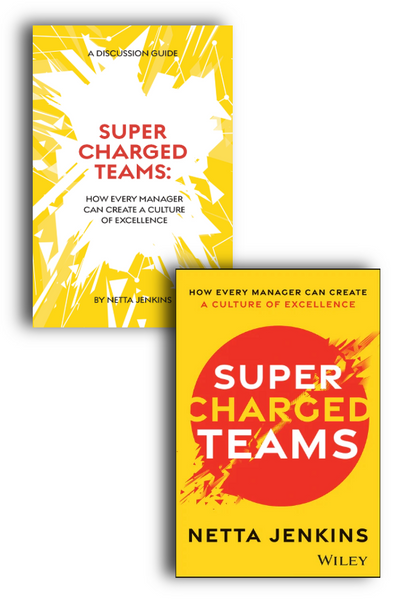Don’t Measure Employee Engagement—Support Employee Well-Being
An entire industry has emerged around employee engagement, but the statistics measuring it have remained low—and stubbornly steady. Mark C. Crowley suggests it's time to try a new approach in The Power of Employee Well-Being.
For two decades now, “engagement” has been a buzzword in our workplaces.
Hundreds of books have been written on this topic, all promising that a commitment to improving engagement would result in lower turnover rates, superior employee morale, and enhanced overall performance.
And considering the massive upside that existed for companies were they to win back a greater percentage of their employees’ hearts and minds, one might imagine that major initiatives were launched everywhere, leading to a significant improvement in engagement scores.
Remarkably, that’s not what happened at all.
Employee engagement in America today remains stagnant at around 31 percent— essentially unchanged since 2013.1 Globally, the picture is even worse: Gallup estimates that just 21 percent of employees worldwide are engaged.2
WHY ENGAGEMENT NEVER IMPROVED
I asked a large and varied group of workplace leaders why they believed engagement had failed to become a major priority in their companies, and the responses proved highly consistent.
Most stressed that investors never held CEOs accountable for engagement because other well-established metrics for evaluating organizational performance were deemed more important. On top of that, employees were generally surveyed no more than twice a year. It often took months for the results to be distributed to managers, and poor scores were never assigned to a specific person to fix. Rarely were managers’ performance reviews or compensation tied to improving engagement. Ultimately, the workers themselves grew to believe the survey process was a complete joke, leading many to conclude that their employers didn’t really care about their feelings and concerns at all. Ironically, this perceived indifference led people to become even less engaged in their jobs.
While it’s well known that some companies—including Google, Microsoft, Salesforce, Patagonia, Zappos, and others—took employee engagement very seriously and committed themselves to being great places to work, time has shown that the vast majority of organizations simply went on to treat engagement as a tick-the-box exercise rather than demonstrating any genuine commitment to improving their workplaces.
And as they were never held responsible for elevating engagement within their own teams, most managers came to consider it to be HR’s job, rather than an integral part of their own core leadership responsibilities.
IT’S TIME TO MOVE ON FROM EMPLOYEE ENGAGEMENT
For over two decades,3 chasing employee engagement has been all talk and no action. So, going forward, it’s time for leaders to stop focusing on what has really become a meaningless metric and to instead focus on one that actually matters: employee well-being.
As an important distinction, efforts to improve employee engagement aim at motivating workers to become more committed to their companies and jobs, while efforts to improve well-being focus on enhancing employees’ overall health and happiness. An intentional pivot toward elevating well-being will help solve two rather significant problems facing businesses today.
The first of these problems is that chronic employee burnout has become an epidemic, leading to costly turnover. One Deloitte study found that 77 percent of US professionals have experienced burnout at their current job, with 91 percent saying that having an unmanageable amount of stress and exhaustion negatively impacts the quality of their work.4 As a result, an astonishing one in five American workers reportedly have daily thoughts about quitting their jobs.5
The second problem facing organizations today is that managers are so incentivized to meet their targets that they’re not effectively supporting their employees’ emotional and psychological needs. A report from employment and labor law company Littler found a 74 percent surge in employees requesting leave or accommodations for mental health–related issues in just one year, from 2023 to 2024.6
There is also mounting evidence that improving their sense of well-being at work has become a personal priority for most people,7 with 84 percent of respondents to a separate Deloitte survey identifying this as their number one priority—even more important to them than getting ahead in their careers.8
As punctuation, the American Psychological Association’s 2023 Work in America survey found that 92 percent of workers consider it very or somewhat important to work for an organization that demonstrates it values their emotional and psychological well-being.9
The pursuit of well-being also had a direct impact on employee retention in the months after offices reopened following the COVID-19 pandemic lockdowns. Between January 2021 and June 2023, there was an unprecedented spike in the number of American workers who quit their jobs each month, with approximately 20 percent of the workforce leaving a job in 2021 alone. This astonishing mass exodus, now widely known as the “Great Resignation,” was driven by factors such as low pay, feeling disrespected, a lack of opportunities for advancement, and the desire for better work-life balance and well-being.10
All of this data not only signals that employee well-being is in great peril, but also implies that to ensure their organizations retain their talent, leaders must quickly pivot in ways that will ensure their employees thrive.
INSIGHTS FROM THE WORLD’S LARGEST WELL-BEING STUDY
Oxford University Saïd Business School professor Jan-Emmanuel De Neve partnered with global employment firm Indeed and asked website visitors to anonymously grade their responses to four questions:
- Do you feel happy most of the time?
- Are you content with your work?
- Do you find your work to be purposeful and worthwhile?
- Are you experiencing negative stress at work?
Remarkably, as of 2025, over 20 million people had submitted responses, making it one of the largest studies on work happiness ever performed.11 This research led to the important discovery that feelings—specifically, how people feel at work and how they feel about their work—determine employee well-being.
THE KEY DRIVERS OF WELL-BEING
Employee well-being encompasses far more than just job satisfaction and workplace happiness. It includes a thorough consideration of an individual’s physical, emotional, and mental health, along with their work-life balance. Genuine well-being is also shaped by having a sense of purpose in one’s role, the freedom to determine when and where to work, and opportunities for ongoing personal and professional development.
Essentially, De Neve determined that it really boils down to the culture of one’s organization and the impact and influence of its leaders. Do employees feel they work in an environment where they can thrive both professionally and personally?
THE MOST SURPRISING DRIVER OF WELL-BEING OF ALL
De Neve’s most unexpected and profound conclusion is that the greatest driver of employee well-being is belonging.
A sense of belonging comes when workers feel their organizations, managers, and colleagues care about them personally. It comes when their workplace consistently meets their social needs for friendship, connection, and appreciation. It comes when they feel there is diversity, inclusion, and trust in their workplace, and when people work collaboratively, as a team.
It’s little surprise that De Neve also discovered that very few workplace leaders today grasp the importance of fostering belonging within their teams. Just 6 percent of leaders who were surveyed rated “belonging” as a primary driver of employee happiness at work, and only a third (34 percent) ranked it among the top five drivers.12
HOW WELL-BEING AFFECTS PRODUCTIVITY
Over a six-month period, De Neve conducted a separate study at a British Telecom call center where he asked employees to describe how happy they felt at the end of every work week by choosing one of five emojis representing their overall level of contentment: a very happy face, a happy face, a neutral face, a sad face, or a very unhappy face (see figure 1).13

De Neve then compared this simple, straightforward, and easy-to-solicit feedback to employee performance data the organization regularly tracked, such as the number of calls people handled, customer satisfaction per call, time spent per call, and daily sales. He found that productivity was directly related to how workers felt in any given week— meaning that the higher the sense of well-being workers reported, the better the call center’s overall performance was.
As an economist, De Neve later proved that traditional financial impacts like return on assets, profits, and a firm’s value also have a direct and positive correlation to employee well-being.14 And he isn’t alone in discovering that investing in worker well-being can improve retention and productivity:
- Research by Gallup found that companies with high levels of employee well-being have a 27 percent higher profitability rate compared to those with low levels.15
- Researchers at the London School of Economics, in collaboration with Gallup, conducted a study covering 1.8 million employees across 73 countries. They concluded that higher employee well-being correlates directly with increased productivity, customer satisfaction, and profitability.16
- Case studies in the Global Council for Happiness and Wellbeing’s 2019 policy report showed that organizations with robust well-being programs experience improved financial outcomes and lower employee turnover.17
Unfortunately, while well-being programs are common in organizations these days, evidence of their success has been hard to find.18 For instance, De Neve’s colleague, fellow Oxford researcher William Fleming, analyzed survey responses from 46,336 workers and found that company-sponsored mental health resources (“wellness benefits”) had no significant impact on worker well-being.19 More specifically, he found that employees who took advantage of available resources such as wellness programs, sleep apps, and resilience and stress management classes were no better off than their colleagues who never used them.20
ELEVATE YOUR TEAM’S WELL-BEING
What all of this means for us as leaders is that the stakes have now been raised. All of the human beings who work for us have profound new (and permanent) expectations of work, and we must meet those expectations if we are to retain them and inspire the best from them.
According to a February 2024 survey from American automaker Ford, 52 percent of polled employees worldwide said they would take a 20 percent pay cut to achieve a lifestyle that prioritized their well-being and quality of life.21 Other recent studies have found similar results, highlighting a growing trend of employees prioritizing work-life balance over higher pay. The legacy of COVID has undoubtedly influenced this trend, which signals that work is no longer the sole focus of many people’s lives. This represents a major shift away from the Industrial Age view that work must always take precedence.
To restate the obvious, company leaders cannot sustainably improve employee well-being simply by measuring it (remember, we tried this unsuccessfully with employee engagement)— and no generic “well-being” or “wellness” program will provide the solution either.
As a point of clarity and important reiteration, I define “employee well-being” specifically within a workplace context. Here, we focus on how to create a positive and nurturing workplace culture—one that addresses what employees everywhere today seek from their experience at work: a caring and appreciative boss, a sense of belonging, a collaborative environment, manageable workloads, emotional and mental health, professional development, work-life balance, and fair treatment.
In our framework, we address employee well-being in terms of ensuring that people feel valued, respected, deeply connected to their colleagues, and empowered in their roles, not in terms of personal health practices such as diet, exercise, or spirituality.
This is crucial because when people perceive their personal well-being as high at work, their individual productivity tends to be high as well. The bottom line is that how people assess their personal well-being is one of the greatest drivers of their dedication and performance.
In their book It’s the Manager: Moving from Boss to Coach, former Gallup CEO Jim Clifton and Chief Scientist Jim Harter conclude that managers account for 70 percent of the variance in overall team performance.22 From this, we can impute that the practices and behavior of a team manager largely determine the degree of well-being any team experiences.
As few C-suites have directly tasked workplace managers with supporting employee wellbeing (traditionally, their job has only been to drive performance and ensure goals are met), managers will now need a concise guide—a road map—to use in helping their people thrive, flourish, and perform optimally.
Throughout my decades as a senior leader, and for the past fifteen years as an author and consultant, I have been living and breathing workplace leadership—most notably by digesting a preponderance of research that proves there are far more enlightened and informed ways of motivating employee performance than we’ve historically believed.
In 2011, I wrote the first edition of a book that eleven American universities have since used in their classrooms. In Lead from the Heart: Transformational Leadership for the 21st Century, I argued that traditional workplace management practices were failing workers and organizations, and that emerging science had proven that human beings actually perform best when they feel valued, esteemed, cared for, developed, appreciated—even nurtured (we’ve since learned that all of these are key drivers of well-being).
And while I already had truly compelling data and evidence to validate my thesis, leaders nevertheless met me with instinctive skepticism. The idea of caring or leading with any amount of heart sounded incredibly soft and weak to a lot of people in business. While disappointing to me, this response nevertheless made sense in light of traditional leadership theory, which had always advocated for squeezing workers, not nurturing them in any consequential way.
Slowly but surely, I committed myself to winning over workplace managers by presenting on stages and in articles as much evidence as I could find that demonstrated that our traditional ways of leading people were entirely misaligned to human nature.
I read scores of books in myriad genres, including over 150 written by the world-class academics, researchers, and CEOs I went on to interview on my Lead from the Heart podcast.23 And, in 2022, I wrote a second edition of my book, imbued with the most up-to-date knowledge I’d acquired.
Now, in The Power of Employee Well-Being, my goal is to make you the beneficiary of all my experience in helping managers to nurture employee well-being while simultaneously achieving high performance—and to make the conclusions I’ve reached actionable with the least required investment of your time. I did all of this to make what I’ve learned easily applicable, because as Johann Wolfgang von Goethe wrote:24
"In the end, we retain from our studies only that which we practically apply.”
Reprinted with permission of Berrett-Koehler Publishers. Copyright © 2025 by Mark C. Crowley. All rights reserved.
About the Author
Mark C. Crowley, a pioneering leader and bestselling author. With twenty-five years in the competitive financial services industry, he rose to national roles, earning Leader of the Year for his emotionally connected, heart-centered approach that drove exceptional performance and employee growth. His book Lead from the Heart disrupted conventional management with research proving traditional methods undermine employee achievement. Now taught in eleven universities, it ignited a global movement for humane leadership. In The Power of Employee Well-Being, he advances this vision, demonstrating that thriving teams fuel organizational success. Mark’s Lead from the Heart podcast, ranked in the top 1.5 percent globally, reaches 175+ countries. A sought-after speaker, Fast Company contributor, and organizational culture consultant, he shapes modern workplaces. A UC San Diego graduate, Mark lives in La Jolla, California.





